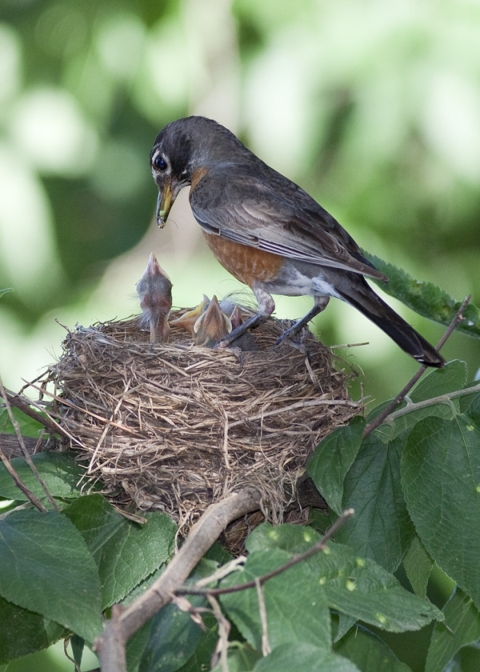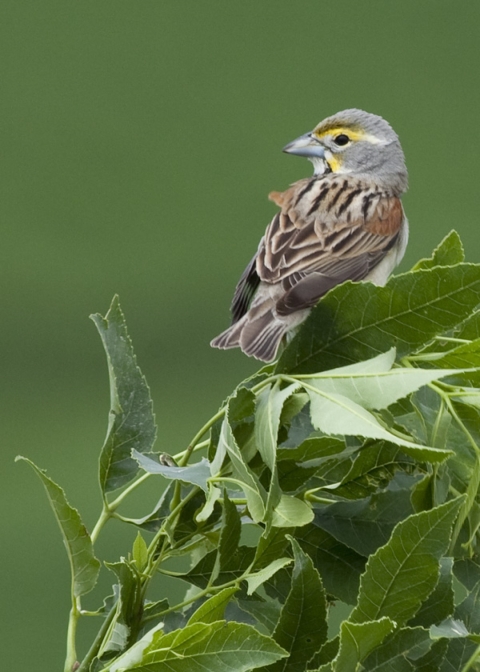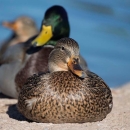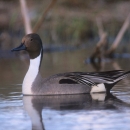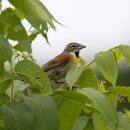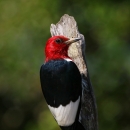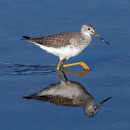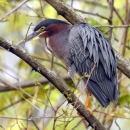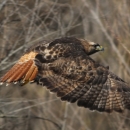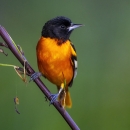Seasons of Wildlife
Spring
In early spring (typically early March) waterfowl move through the refuge on their way north. Along with the waterfowl, eagles also move through and head north. Resident bald eagles will begin nesting on the active eagles nest on the refuge. Later in the spring, shorebirds and spring songbirds utilize the refuge wetlands, prairies and bottomland forest habitats as a resting and refueling place during their migration. Turkeys can be heard attempting to attract their mates. Spring is a great time to see a diversity of wildlife on the refuge.
Summer
During the summer months, look for wood duck broods as they learn how to swim on the refuge wetlands and ponds. Great blue herons can be seen feeding in wetlands and on DeSoto Lake. Turtles are often seen crossing the roads in search of mates and nesting areas. Fawns with their mothers can be seen grazing and frolicking. The best time to view wildlife in the summer heat is early in the morning or just before dusk in the evening.
Fall
Fall marks the start of the migration. Neo-tropical migrants will move through the refuge on their way back to their wintering grounds in South America. In late fall, waterfowl and eagles start arriving on the refuge in search of food. Peak populations of 50,000 or more ducks, mostly mallards, are common on the refuge during the fall migration. Late October through early December are typically the months of peak waterfowl use.
Winter
Bald eagle numbers typically peak on the refuge in December and again in late February. Look for eagles along the edge of DeSoto Lake and along the Missouri River. Concentrations of ducks and geese will also stick around in open water areas during the winter months on the refuge.
Featured Species
Migratory Waterfowl: Migrating birds have followed the Missouri River each spring and fall since the last ice age. As their resting and feeding sites along the flyway have disappeared, refuges, such as DeSoto National Wildlife Refuge, have become increasingly vital to their survival.
During the spring and fall, DeSoto National Wildlife Refuge wetlands become a temporary home for a variety of waterfowl and shorebirds. Look for migrating birds from September - December and March - April. A variety of birds depend on the aquatic and wetland habitats at DeSoto National Wildlife Refuge. Dabbling ducks such as mallards, blue and green winged teal, northern pintail, wood ducks and gadwalls can often be seen in the refuge wetlands. On DeSoto Lake, geese such as Canada, white-fronted and snow geese, along with trumpeter swans can be seen in late fall and winter resting on open portions of the lake. Diving ducks also congregate on the open waters of the lake and species include common mergansers, hooded mergansers, common goldeneyes, ring-necked ducks and lesser scaups.
Grassland Birds: DeSoto National Wildlife Refuge grasslands are home to many bird species including dickcissels, grasshopper sparrows, goldfinches and meadowlarks. The refuge’s large tracts of prairie provide cover for nesting sites protecting the birds from predators, such as coyotes, foxes and raccoons, which prefer the edges of the grasslands.
Bottomland Forest and Forest Edge Birds: In spring and summer, the bottomland forests of DeSoto National Wildlife Refuge fill with color and music as a variety of songbirds arrive from Central and South America. These migrants are called neotropical migrants because they breed in Canada or the United States and then migrate in the winter to Mexico, Central America, South America or the Caribbean.
For information on the most recent refuge bird count click here




